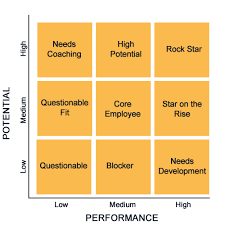Building an organization of star performers is the objective of every business. However, without identifying top players, their talent and understanding how their skills can contribute to your organization, driving business growth is a tough row to hoe. That is, for any organization, in addition to the investment and expansion plans, measuring the employee performance is a key to business expansion & yielding high revenue.
In terms of measuring workforce performance, ignorance is never bliss. According to a survey report, about 67% of employees disengaged in their workplace. Demands of their personal lives, health issues, and distracted by smartphones makes it hard for employees to focus, give their best shot at work and results in low productivity.
Measuring productivity in the workplace is a tricky task. Add to this, several pitfalls makes it one of the challenging tasks.
- Poor metrics
- Lack of transparency
- Irrelevant performance framework
- Lack of communication
- Lack of reward & recognition
Hence it becomes a necessity for organizations to develop strategic objectives that measure activities of their frontline employees, monitor those metrics and engage with their teams to discuss progress in meeting the targets. Additionally, ongoing communication with employees improve performance and narrow down their focus to company priorities. This, in turn, helps you accomplish enhanced results and drives business growth.
Some of the added advantages of measuring employee performance are:
- Driving organizational focus on strategic objectives – Employee performance framework has the potential to focus on the entire business. When done in the right manner, it links the activities of each employee to a list of strategic organizational goals.
- Regular feedback improves employee growth – Periodic feedback from the administration helps an employee to work on his/her weak points or make changes in his/her working style.
- Identifying skills gaps within the organization – Regular evaluation will not just help in identifying the departmental strengths, trends, etc. but also enable you to figure out the skills gaps, training needs, etc.
- Discovering top talent for succession – Irrespective of the size of the company, to maintain stability, it is a mandate for a company to plan the succession (especially for high-level profiles). Performance measurement will help you shortlist the talents for building the future of the business.
- Developing managers into mentors – Regular feedback sessions between supervisors and their employees enable the managers to work on their own leadership and mentoring skills.
How to gauge employee performance?
Tracking productivity of your workforce is arduous. But when done right, it can track the progress of your organization.
- Quality of work done – The timely completion of tasks to the expected standard is an indicator in measuring employee performance. Check the standard of the completed work and identify if he/she is putting maximum effort.
- Subjective appraisal by management – Assess productivity during bi-annual performance reviews. You can use the 9-box grid approach and evaluate the current value of the workforce.

- Net Promoter Score – Net Promoter Score (NPS) acts as an employee performance indicator, especially for sales. NPS (number between 1-10) represents the willingness of a customer to recommend your service/product to other potential customers.
- 360-degree feedback – Ask feedback from employee’s peers, subordinates, and managers on specific topics. The feedback obtained will often be accurate & demonstrate a multi-perspective view of an individual’s performance.
- 180-degree feedback – Here, you can collect feedback from the employee’s manager and direct colleagues. But this approach can be used only if the employee is not having direct contact with customers.
- Punctuality – Individuals who arrive regularly on time to work and take leaves rarely are likely to meet their performance objectives or implies that they work to their full potential.
- Random quality checks – This can be done in order to measure the actual performance. This approach doesn’t any opportunity or time to your staff to prepare themselves, thereby enabling you to measure their authentic performance.
- Revenue per employee – This approach can be used for determining the performance of individuals of sales profile. It presents the revenue acquired by the company due to an individual.
- Profit per full-time equivalent (FTE) – This method is similar to revenue per employee technique. The only difference is in this method profit is considered rather than revenue.
- Forced ranking – Also known as a vitality curve, here the managers must prepare a list ranking the best and worst employee according to his perspective. This way, you can compare individuals productivity or performance with one another.
- Overtime per employee – Individuals who are eager to put in the extra effort are more motivated and generate more in terms of work quality.
- Collaboration – This platform lets you tracking of all aspects, including time management, task completion, productivity, etc. using collaboration tools.
Accurate performance measurements is one step to ensuring greater profits and increased employee motivation. However, note that tracking performance of employees of various profiles using one single metric is not possible. Hence opt for customized performance management system and recognize individual accomplishments.
